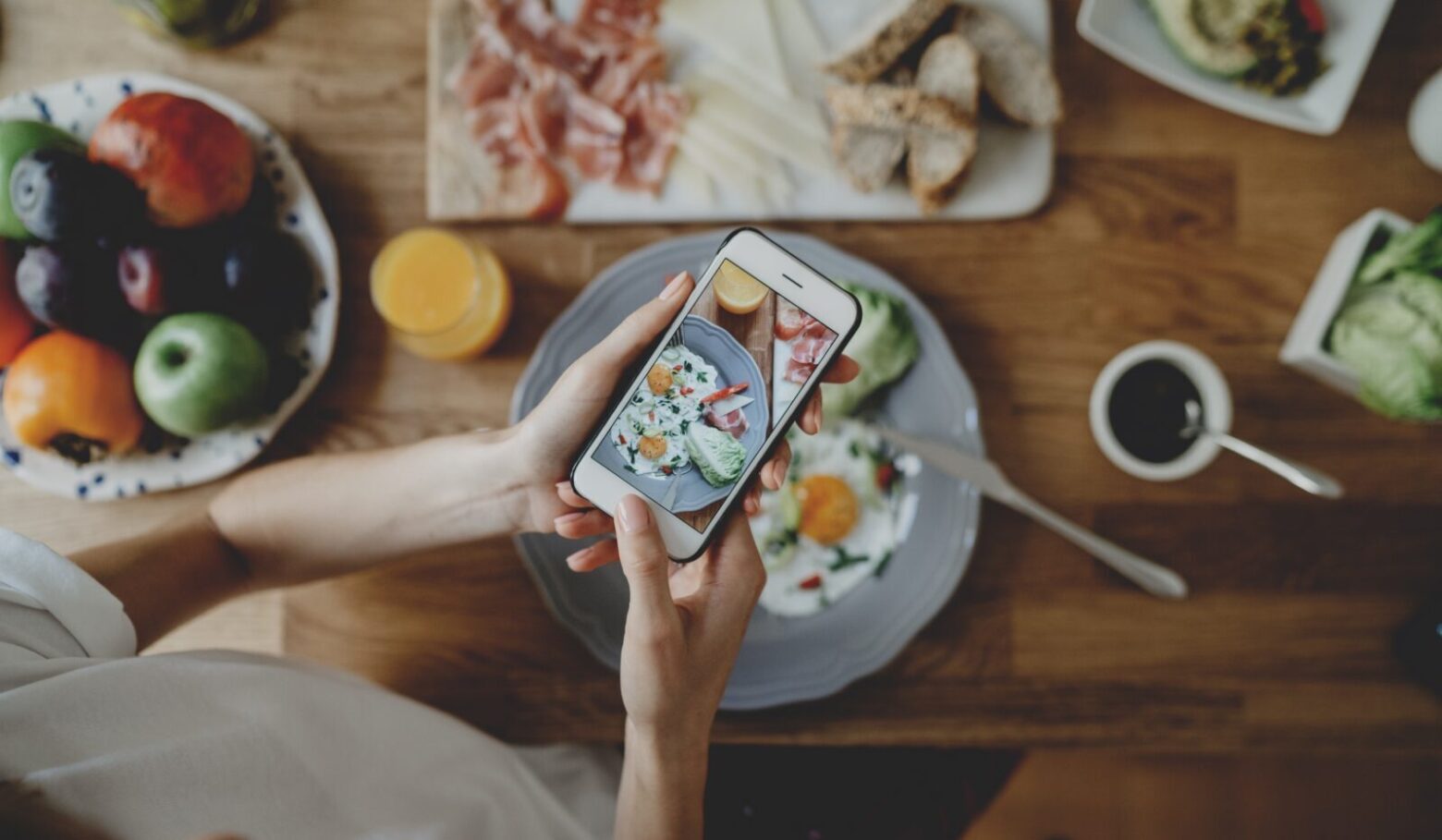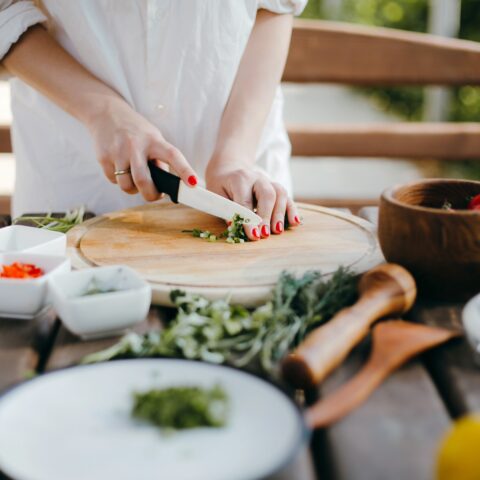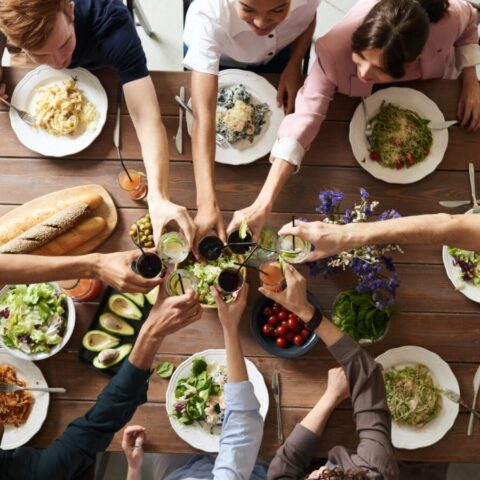10 Surprising Foods That Aren’t Paleo

The Paleo community is passionate about food, and the huge popularity of The Paleo Diet® means there’s been a robust discussion online about which foods are Paleo and which are not. While much of this conversation has been productive and good, some blogs and online forums have spread misinformation about what you can eat on The Paleo Diet. Today, there are many myths and misconceptions about The Paleo Diet online and this makes healthy eating confusing when it should be simple.
We don’t want to see people trying an incorrect version of Paleo eating! We sometimes hear from people disappointed after trying what they believe is The Paleo Diet only to discover that they were not following The Paleo Diet at all.
So we’re here to set the record straight!
Here are the top foods that we often see inaccurately labeled as “Paleo”—and why our science team considers these foods to be unhealthy and therefore not Paleo.
Foods Often Mistaken for Paleo
1. Bacon
I know. Many of our hearts just fell into our stomachs. Bacon? Not Paleo? How?
Bacon is one of the most-confused-as-Paleo foods across the Web. But what makes bacon not Paleo?
It mostly comes down to how bacon is processed. When you grab a package of bacon at the grocery store, it’s filled with nitrates, added curing salts, preservatives, and even chemicals from “natural smoke” to add flavoring. By the end of the manufacturing process, even most natural pork bacon has effectively been turned into a highly-processed, cured or smoked meat. Highly processed meats are some of the least healthy, least sustainable foods you can eat—which is why we only certify the most natural meats under our food certification program.
What to choose instead: Unprocessed pork bellies are a natural cut of meat that looks like thick bacon. When minimally processed, the pork belly cut is a much healthier choice than bacon.
2. White Potatoes
Not long ago, white and yellow potatoes were almost universally recognized as being “not Paleo.” In recent years, however, they’ve crept their way back onto mistaken-for-Paleo lists, likely because we consider sweet potatoes to be healthy for most people.
Why are regular white and yellow potatoes not Paleo? They’re excluded mainly because they have both a high glycemic index and low nutrient content. They also contain large amounts of saponins, a soap-like surfactant compound which has been found in studies to contribute to gut permeability, or leaky gut syndrome. [2] Leaky gut can allow substances to pass through the digestive barrier and into the blood stream, potentially causing an immune reaction.
What to choose instead: Sweet potatoes (also known as yams).
3. Added Salt
That’s right, salt—even sea salt (in all forms: Celtic, Himalayan, pink, green, etc.)—is off the table.
Just because salt is a natural substance doesn’t make it Paleo. When thinking about Paleo foods, we always have to consider the naturally occurring quantities present in our history. The Paleo Diet is all about eating the foods that our hunter-gatherer ancestors would have been able to find naturally around them in their environment, which means recognizing they likely didn’t have a salt shaker lying around.
Even if they lived near a salt bed or salt lick (or the ocean), easy access to modern-day daily intakes of salt would have been the exception, not the rule. Further, the art of gathering salt and making it fine enough to salt food would have been an isolated occurrence and not a regular enough occurrence to drive our evolution.
And the science on salt is crystal clear: added salt in any form is harmful to our health. Research shows that too much salt can lead to a host of health issues. Many Paleo bloggers started to promote added salt because of research that showed too little sodium also hurt our health. However, that research has since been proved to have several flaws.
The truth is that added salt can contribute to serious health problems: cancer, autoimmune disease, insulin resistance, poor sleep, and, of course, hypertension and cardiovascular disease including stroke. [3]
One of the most important ratios in our diet is the sodium-to-potassium ratio and the modern Western diet, for example, contains a far higher sodium-to-potassium ratio than all the research on our hunter-gatherer ancestral diet, especially when salt is added to our food.
So how much salt is okay? According to Dr. Cordain’s research on salt, the amount of salt that is healthy to consume is related to how much potassium we consume from natural sources, which means that all added salt is excessive and unhealthy.
What to choose instead: Season foods with garlic powder, black pepper, or other salt-free spices. Or make your own spice blends like the Cordains do!
4. Natural Sweeteners
The idea of consuming stevia, honey, sugar, coconut sugar, and maple syrup is very similar to the salt idea: natural sweeteners are uncommonly found in nature and so our consumption of them would have been limited, and consuming lots of natural sugars each day would have been next to impossible for hunter-gatherers.
After all, when was the last time you stumbled across a honeybee hive filled with honey? And even if you did, think of the effort it would take to knock it out of the tree, avoid getting stung, then break apart the hive and consume the honey.
In other words, while tribes like the indigenous Hadza people consume honey as part of their natural diet, they also burn a ton of calories as part of the hunt. Similarly, if athletes wanted to consume a small amount of natural honey, that would be permissible under The Paleo Diet.
It’s also important to take a look at the natural state of the sweetener. For example, stevia exists naturally in the form of a leaf, so the powdered form of stevia that is available today on grocery shelves makes it too easy to eat too much than is natural.
Overall, the same rule that applies to sea salt applies here—just because it’s “natural” doesn’t mean it’s Paleo or healthy. Natural sugars also spike our blood sugar and can lead to problems like insulin resistance and Alzheimer’s disease just as quickly as the blue, pink, and yellow packages of sweeteners found at the local coffee shop.
In sum, any naturally occurring sugar aside from fruit just isn’t found in abundance in nature, and should be eaten only occasionally as part of your flex meals in our guidelines to practicing The Paleo Diet.
What to choose instead: Fruit! Fruit contains delicious sugars that don’t spike blood sugar or harm insulin response because of their fiber content. Many fruits contain potassium that can also counteract the health impacts of sodium.
5. Green Beans
Although green beans are safer to each than most other beans, they are still a legume and all legumes contain unhealthy compounds.
One of the reasons some Paleo bloggers have given green beans a pass is due to their lower levels of lectins and agglutinins compared to other legumes such as kidney and adzuki beans. This is especially true when they are in their young, non-dried state as fresh green beans.
Regardless, green beans still contain many antinutrients such as saponins and are much lower in healthy micronutrients than vegetables and fruits. [4]
What to choose instead: Broccoli, a healthy side of crunchy Brussels sprouts, homemade kale chips.
6. Coffee
We at The Paleo Diet have changed our minds on coffee a few times in response to new research. Today, we believe that coffee is okay for most people.
But you should know that coffee does have some drawbacks for people who metabolize caffeine slowly and because of some conflicting research on its health impacts, including:
- Several analyses of coffee have shown that it can reduce insulin sensitivity, while also worsening glycemic response. [5,6]
- Heavy coffee drinkers may create a constant stimulatory effect on the nervous system that could over-stimulate the adrenal glands, potentially resulting in a cascade of negative effects.
Coffee also requires a bit of processing in order to go from a “bean” to a black liquid in our cups, meaning it would have been consumed very sparingly in hunter-gatherer days, if at all. However, it is worth pointing out that while we call it a “bean,” coffee beans are not actually beans.
That said, research suggests coffee has its fair share of benefits, too, particularly antioxidant content.
In general, a daily cup of coffee is probably okay for most people.
Other great drinks: Try ground chicory and dandelion root, mushroom team, green tea.
7. Butter and Ghee
The idea that ghee and butter are Paleo likely came from years of crossover between The Paleo Diet and other similarly named diets like “primal” or carnivore diets, the Bulletproof Diet, and Whole30, which grew in popularity after the explosion of popularity of The Paleo Diet.
Ghee might also have become attractive to Paleo dieters because it is considered an ancient, sacred food in India. However, ghee is still a dairy product and no dairy products are Paleo because they are unhealthy for humans. This also goes for butter, regardless of the heathy fats it contains. Butter and ghee both contain casein and other irritating milk proteins, putting them on the no-go list.
A few other reasons to avoid all forms of dairy include:
- No other mammalian species consumes milk after weaning, except for humans and domestic cats.
- 65 percent of people experience gas, bloating, and digestive distress after consuming cow’s milk, due to lactose sensitivity or intolerance.
- Research shows that milk consumption is significantly correlated to cardiovascular death rates.
The bottom line here: Dairy has little nutritional value compared to lean meats, vegetables, seafood, and fresh fruits.
What to choose instead: Olive oil, coconut oil, avocado products, walnut oil
8. Kimchi
Kimchi can be Paleo, but most traditionally produced kimchi is unhealthy because of its high salt content.
To make kimchi, cabbage is soaked in a brine with large amounts of salt. (Remember, added salt is not Paleo.)
If you do eat kimchi, eat small portions and offset the sodium by consuming high-potassium foods like broccoli and mushrooms afterward to offset the excess salt.
What to choose instead: If you want a safe kimchi to try, check out this lower sodium kimchi recipe, which is better for you than traditional recipes.
9. Kombucha
While kombucha may contain beneficial probiotic bacteria and yeasts that could benefit gut health, the way nearly all kombucha is brewed today—with a lot of added cane sugar—is not good for you.
Sugar in any form, but most especially cane sugar, is not a part of The Paleo Diet, and thus the sugars used to feed the SCOBY (the yeast present in kombucha) are not Paleo.
Many have argued that if kombucha were made with honey or other natural sweeteners (as these sugars would have existed during the Paleolithic time, unlike the cane sugar we use today) it would be Paleo, and there are brands that do utilize honey to make kombucha for this reason.
Still, sugar is sugar, and unless you are torching lots of calories as part of an athlete or very active lifestyle, eating even small amounts of sugar regularly can spell trouble for your insulin response, blood sugar levels, and brain health.
What to choose instead: iced green tea or our Strawberry-Lemonade Electrolyte Drink.
10. Pseudo Grains
Pseudo grains, such as chia seeds, amaranth, quinoa, buckwheat, and other ancient grains are often touted as Paleo. However, like other grains, pseudo grains contain toxic lectins, saponins, and protease inhibitors that can cause gastrointestinal distress like leaky gut syndrome and inflammation. [7,8]
Most seed foods (a.k.a. grains) contain these compounds as a defense to ward off predators so that the seed can survive. So, when we consume them, we consume these harmful mechanisms. A little-known fact: Quinoa contains the highest concentration of saponins, which are a soap-like surfactant compound, of any grain (5,000 mg/kg).
In addition, chia seeds have been touted as a great plant alternative for protein; however, the mucilaginous gel that surrounds the seed (if you’ve ever made chia pudding, you’ve seen this sticky substance) actually forms a barrier that can disrupt digestion, causing low protein digestibility.
What to choose instead: Nut-based flours instead of pseudo grains or if seeking protein, consider natural meats, seafood, or eggs, which offer a superior source of complete amino acids.
Natural Foods, Natural Quantities, Natural Forms
It’s easy to see why some of these foods were wrongly categorized as Paleo. The takeaway here is to remember that just because an ingredient is natural does not necessarily make it healthy. There’s more to it!
It’s important to consider natural quantities of these foods and also how these foods are processed.
If the source was Paleo, but the production is different today than it would have been during hunter-gatherer times, we need to look at modern research to decide whether or not it’s truly healthy.
Finally, how much we can eat relative to our daily calorie expenditure should be factored in as well.
References
- E. Giuffra, J. M. H. Kijas, V. Amarger, Ö. Carlborg, J.-T. Jeon and L. Andersson. The Origin of the Domestic Pig: Independent Domestication and Subsequent Introgression. Genetics. April 1, 2000 vol. 154 no. 4 1785-1791. <https://www.genetics.org/content/154/4/1785.full>
- IT Johnson, JM Gee, K Price, C Curl, GR Fenwick. Influence of saponins on gut permeability and active nutrient transport in vitro. Oxford Academic. DOI: 10.1093/jn/116.11.2270 <https://pubmed.ncbi.nlm.nih.gov/3794833/>
- Santisteban, M.M., et al., Abstract 104: Cerebrovascular and Cognitive Dysfunction in DOCA-Salt Hypertension is Mediated by Perivascular Macrophages. Hypertension, 2017. 70(suppl_1): p. A104-A104. <https://www.ahajournals.org/doi/abs/10.1161/hyp.70.suppl_1.104>
- Edwin H W Leung, Jack H Wong, T B Ng. Concurrent purification of two defense proteins from French bean seeds: a defensin-like antifungal peptide and a hemagglutinin. J Pept Sci. 2008 Mar;14(3):349-53. doi: 10.1002/psc.946. <https://pubmed.ncbi.nlm.nih.gov/17994641/>
- Shi X, Xue W, Liang S, Zhao J, Zhang X. Acute caffeine ingestion reduces insulin sensitivity in healthy subjects: a systematic review and meta-analysis. Nutr J. 2016 Dec 28;15(1):103. doi: 10.1186/s12937-016-0220-7. Review. <https://pubmed.ncbi.nlm.nih.gov/28031026/>
- Robertson TM1, Clifford MN1, Penson S2, Chope G2, Robertson MD1. A single serving of caffeinated coffee impairs postprandial glucose metabolism in overweight men. Br J Nutr. 2015 Oct 28;114(8):1218-25. doi: 10.1017/S0007114515002640. Epub 2015 Aug 28. <https://pubmed.ncbi.nlm.nih.gov/26316273/>
- Vidueiros SM, Fernandez I, Bertero D, Roux ME, Pallaro A. Effect of a quinoa (Chenopodium quinoa W) based diet on the intestinal mucosa of growing Wistar rats. P Nutr Soc 2013;72:E67. https://doi.org/10.1017/s0029665113000694.
- Johnson IT, Gee JM, Price K, Curl C, Fenwick GR. Influence of Saponins on Gut Permeability and Active Nutrient Transport in Vitro. J Nutrition 1986;116:2270–7. https://doi.org/10.1093/jn/116…;
Megan Patiry
Megan Patiry is a freelance writer specializing in ancestral nutrition. She has personally followed a Paleo-style, ancestral style of eating for over a decade.
More About The Author




